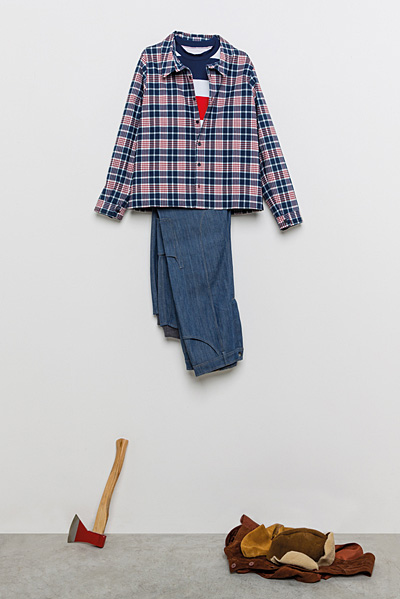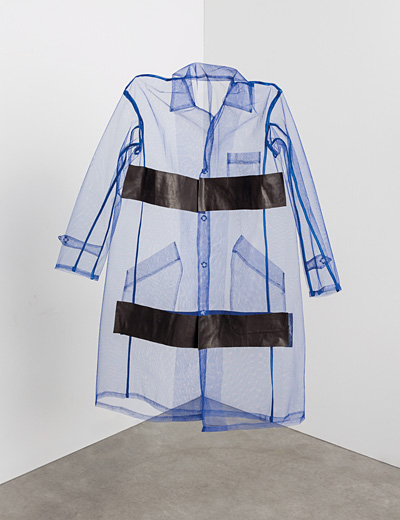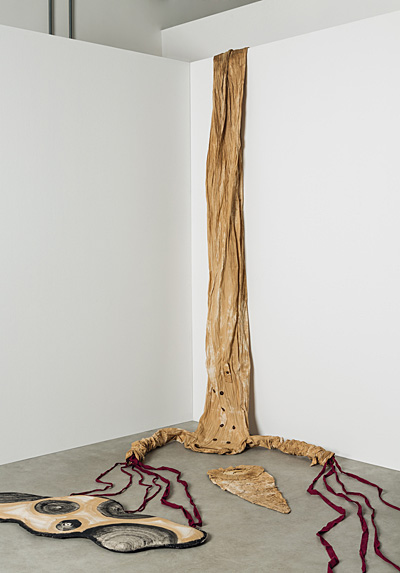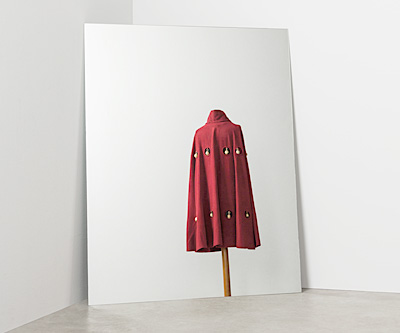|
Faye Toogood: Workers of the World Unite |
||
|
Faye Toogood, Issey Miyake, Nathalie Du Pasquier, Coop Himmelb(l)au and Vivienne Westwood are among those who have designed outfits for an exhibition in Milan that speculates about the kind of jobs that we might eventually do For Workwear an exhibition at La Triennale di Milano in Italy, curator Alessandro Guerriero asked 40 designers, artists and architects to design uniforms that might be worn by the workers of the future. The results – arranged by designer Alberto Biagetti as a “dream boutique” – range from the political to the prosaic, the surreal to the fantastical.
Mella Jaarsma: The Senses Cheat You A contribution that falls into the first category is Faye Toogood‘s Workers of the World Unite – her vision of an egalitarian society comprises 14 similar hand-painted garments, each for a different job. Another is Cameroonian artist Francis Nathan Abiamba’s Clothes for a Migrant – built up of layers of cast-off garments.
Afran (Francis Nathan Abiamba): Clothes for a Migrant Responding to increasing concerns over digital spying, Wolf D. Prix of Coop Himmelb(l)au created a garment made from a metallic fabric that is supposed to block electromagnetic waves and therefore protect people from traceability by such digital entities as Google.
Coop Himmelb(l)au: CHBL JAMMER Coat Some designers speculated about the kind of society that we might become. Vivienne Westwood‘s Lumberjack, for example – a checked shirt and jeans, hanging over an axe and an animal skin – suggests a return to traditional lifestyles and gender roles, while Issey Miyake‘s Extreme Film is a thermal, emergency rescue outfit, designed for a time when the earth has become a hostile and alien place. Allan Wexler’s particularly abstract contribution is Hat/Roof, which traps a body to a job, allowing the worker no rest and no way out.
Vivienne Westwood: Lumberjack
Issey Miyake: Extreme Film Other designers focused more on the messages that clothing can convey. Gentucca Bini’s Clothes for a Chaste Pornographer comprises a translucent trench coat with strategically placed opaque panels, while Nathalie Du Pasquier‘s outfit, Oroval, made from the same fabric as a children’s soft toy, is intended to serve the same purpose – as a substitute for the comfort of human touch.
Gentucca Bini: Clothes for a Chaste Pornographer
Nathalie du Pasquier: Oroval Nanni Strada’s Dress for a Shell-picking Girl has see-through pockets that allow a beach-comber to store her findings in a transparent way, meaning the outfit changes appearance as the pockets fill up, while Denise Bonapace’s Clothes for a Dithering Monk is a cowl with a wavering shape that highlights a monk’s doubts about his faith.
Nanni Strada: Dress for a Shell-picking Girl
Denise Bonpace: Clothes for a Dithering Monk Most common of all were the outfits designed for entirely fictional jobs – for example, Angela Missoni’s patchworked, ethereal Dreamer’s Clothes; Alberto Aspesi’s colour-splashed Work Shirt to Paint Dreams; Antonio Marras’s forestscape Clothes for a Cloud Hunter; and Tarshito’s Buddhist-influenced Clothes for the Researcher of the Divine.
Angela Missoni: Dreamer’s Clothes
Alberto Aspesi: Work Shirt to Paint Dreams
Antonio Marras’s forestscape Clothes for a Cloud Hunter
Tarshito: Clothes for the Researcher of the Divine Biagetti attributes this focus on the otherworldly and dreamlike to the current scarcity of real jobs around Europe. “To design a uniform at a time – especially in Italy – where there isn’t work for anybody, involves seeing the future in a positive way,” he says. Workwear can be seen at La Triennale di Milano until 31 August |
Words Debika Ray
Images: Delfino Sisto Legnani |
|
|
||
|
Alberto Biagetti arranged the outfits as a “dream boutique” |
||


































